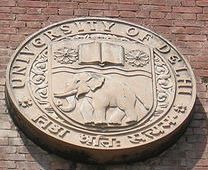Delhi University researchers find nitric oxide regulates both plants and people
 Washington, Apr 28 : Researchers from the University of Delhi, India, have reported in a study that nitric oxide has become an important signalling molecule in plants as well as mammals including man.
Washington, Apr 28 : Researchers from the University of Delhi, India, have reported in a study that nitric oxide has become an important signalling molecule in plants as well as mammals including man.
The researchers took a tropical medicinal herb, called Kalanchoe pinnata, also known as "miracle leaf" as a model plant for their studies and found that nitric oxide targets a number of proteins and enzymes in plants.
Research group headed by Renu Deswal, a faculty member, and her doctoral student at the Botany Department, University of Delhi, India, collaborated with Agricultural Research Service (ARS) scientist Autar Mattoo, to identify 19 such targeted proteins and enzymes in this plant.
These proteins and enzymes play a role in regulating processes from seed germination to cell development to plant death. They also regulate many other important processes including photosynthesis, sugar metabolism, disease- and stress tolerance in plants.
The research indicates that the effects of nitric oxide, a sometimes toxic byproduct of nitrogen oxidation in soil, may have broader implications in plant processes than imagined.
Its modification of proteins, a process called S-nitrosylation, is increasingly recognized as an ubiquitous regulatory reaction in plants and mammals.
This research has for the first time demonstrated that nitric oxide inactivates Rubisco, a major enzyme involved in carbon dioxide fixation and photosynthesis in plants.
Kalanchoe represents plants that have a unique method of carbon dioxide fixation that is shared by succulent plants. Kalanchoe has diverse possible medicinal benefits suggesting the presence of interesting processes at work.
Now, Mattoo is expecting similar studies to be conducted with major crops grown in different production systems, with an eye toward improving both crop yields and quality, including nutritional benefits. (ANI)